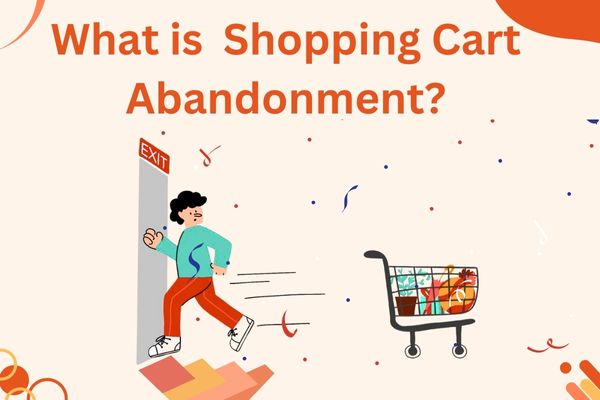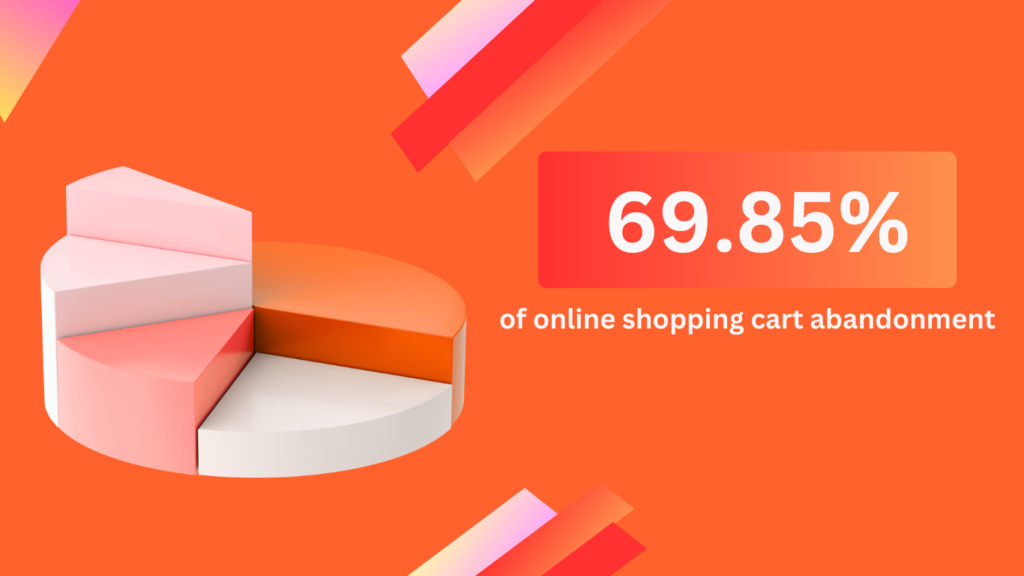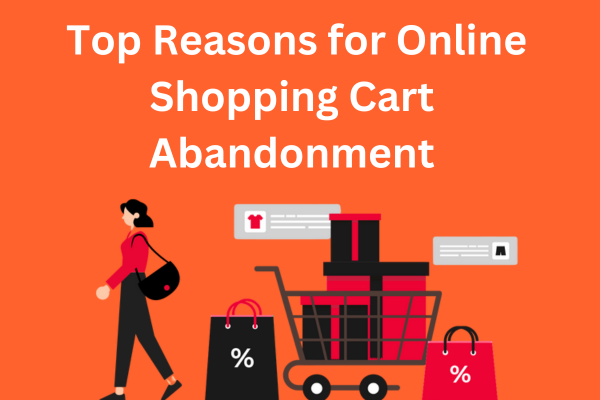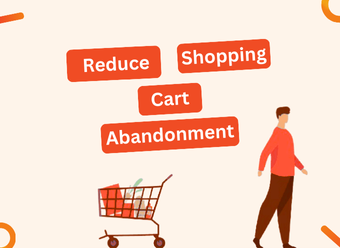Understanding E-Commerce Shopping Cart Abandonment
Imagine this: A customer visits your online store, adds items to their cart, but then leaves without completing the purchase.
Frustrating, right?
This is called E-Commerce Shopping Cart Abandonment, and it’s one of the biggest challenges online businesses face today.
What is E-Commerce Shopping Cart Abandonment?

Many factors cause cart abandonment, including unexpected costs, a complicated checkout process, or security concerns.
Understanding why customers leave can help businesses reduce shopping cart abandonment and increase sales.
Why Does Shopping Cart Abandonment Hurt Online Businesses?
Every abandoned cart represents a missed opportunity.
Here’s why it’s a big problem:
- Lost Revenue – The more people abandon their carts, the less money your store makes.
- Higher Marketing Costs – Businesses spend money to attract shoppers, but if they leave without buying, that investment goes to waste.
- Lower Conversion Rates – A high cart abandonment rate means fewer customers complete purchases.
Overview of the Average Cart Abandonment Rate Across Industries

Cart abandonment is a widespread issue. Studies show that the average cart abandonment rate is around 70% across industries.
That means 7 out of 10 shoppers leave without buying!
Here’s how different industries compare:
- Retail: 72% cart abandonment rate
- Travel & Airlines: 85% cart abandonment rate
- Fashion & Apparel: 74% cart abandonment rate
If your business struggles with abandoned cart ecommerce, don’t worry.
The good news is, there are cart abandonment solutions that can help reduce cart abandonment and recover lost sales.
Want to learn more about common e-commerce mistakes that impact sales? Check out E-Commerce Common Mistakes Must Avoid to Increase Sales,
The Hidden Costs of High Cart Abandonment Rates
Many e-commerce businesses focus on attracting visitors and getting them to add products to their carts.
But what happens when those shoppers leave before buying?
This is where cart abandonment rate becomes a major issue.
When customers abandon their carts, it’s not just about losing a single sale. It affects your revenue, customer retention, and overall business growth. Let’s break down the hidden costs of shopping cart abandonment and why reducing it is crucial.
How Cart Abandonment Impacts Revenue & Customer Retention
A high cart abandonment rate means fewer sales and wasted marketing efforts.
Here’s how it affects your business:
- Lost Sales – Every abandoned cart is a missed sale. If you don’t work to reduce shopping cart abandonment, your revenue will continue to suffer.
- Higher Acquisition Costs – You spend money to bring visitors to your store. If they leave without buying, that investment goes to waste.
- Lower Customer Retention – When customers struggle with checkout, they might not return. This means fewer repeat buyers and lost lifetime value.
Shopping Cart Abandonment Rate & Its Effect on Conversion
Research shows that the average cart abandonment rate across industries is around 70%.
That means for every 10 potential buyers, only 3 complete their purchase!
Here’s a closer look at how different industries struggle with online shopping cart abandonment:
- Fashion & Apparel – 74% abandonment rate
- Electronics – 69% abandonment rate
- Travel & Airlines – 85% abandonment rate
- Retail in General – 72% abandonment rate
If your store has a high cart abandonment rate, you’re not alone. But ignoring the problem can hurt your conversions and overall business growth.
The Connection Between Cart Abandonment Rate & Checkout Friction
Many shoppers abandon their carts due to a complicated checkout process.
Here’s how checkout friction leads to lost sales:
- Too Many Steps – Long, confusing checkouts drive customers away.
- Unexpected Costs – High shipping fees or extra charges cause buyers to rethink their purchase.
- Limited Payment Options – If shoppers don’t see their preferred payment method, they leave.
- Slow Page Load Times – A slow checkout page increases frustration and cart abandonment.
To reduce shopping cart abandonment, businesses must simplify the checkout experience, offer clear pricing, and ensure fast, secure transactions.
To optimize your e-commerce store and increase conversions- Learn how to fix E-Commerce Common Mistakes.
The Top Reasons for Online Shopping Cart Abandonment

Many online stores lose sales because shoppers leave before completing their purchases.
This is called online shopping cart abandonment.
Understanding why this happens can help you fix the issues and increase sales. Here are the most common reasons:
1️⃣ Unexpected Costs (Shipping, Taxes, Fees)
Nothing turns customers away faster than hidden costs.
When shoppers see extra fees at checkout, they often abandon their cart.
High shipping costs, unexpected taxes, or extra service fees can make them rethink their purchase.
💡 Solution:
- Be upfront about all costs.
- Offer free shipping or discounts for larger orders.
- Show estimated taxes early in the checkout process.
2️⃣ Complicated Checkout Process
If checking out takes too long or has too many steps, customers get frustrated and leave.
Forms that ask for too much information or require account creation can be a major turn-off.
💡 Solution:
- Allow guest checkout instead of forcing sign-ups.
- Reduce the number of required fields.
- Use auto-fill options to speed up the process.
3️⃣ Lack of Trust or Security Concerns
Shoppers need to feel safe when entering their personal and payment information. If your website looks outdated or lacks security badges, they may worry about fraud and leave without buying.
💡 Solution:
- Display trust badges (SSL certificate, secure payment icons).
- Show real customer reviews to build credibility.
- Use well-known payment providers like PayPal, Stripe, or Apple Pay.
4️⃣ Poor Mobile Optimization & Slow Website Performance
Many people shop on their phones. I
f your website is slow or doesn’t work well on mobile devices, visitors won’t complete their purchases.
A slow checkout page can cause frustration and lead to abandoned cart ecommerce.
💡 Solution:
- Optimize your website for mobile shopping.
- Improve loading speed by compressing images and using fast hosting.
- Test your checkout flow on different devices.
5️⃣ Limited Payment Methods
Some shoppers prefer credit cards, while others use digital wallets or Buy Now, Pay Later (BNPL) options.
If your store only accepts a few payment types, you may lose customers who can’t pay the way they want.
💡 Solution:
- Offer multiple payment options, including PayPal, Google Pay, Apple Pay, and BNPL services.
- Clearly display accepted payment methods on your site.
- Allow one-click payments for returning customers.
To stay ahead in today’s AI-driven digital landscape, it’s essential to understand what is Answer Engine Optimization and how it impacts customer behavior even before they land on your checkout page.
Proven Cart Abandonment Solutions to Recover Lost Sales
Many online stores struggle with abandoned cart ecommerce, but the good news is that you can reduce cart abandonment with a few smart strategies.
Here’s how you can recover lost sales and improve conversions.
Optimize Your Checkout Process
A long and complicated checkout process drives customers away.
The simpler it is, the better.
💡 How to Fix It:
- Reduce unnecessary form fields.
- Enable guest checkout to avoid forced account creation.
- Use autofill and address lookup tools to speed up checkout.
- Show progress indicators to keep users engaged.
Learn more about how to fix common e-commerce mistakes.
Build Trust with Security & Transparency
Shoppers need to feel safe before they enter their payment details.
If they sense any risk, they’ll leave without completing the purchase.
💡 How to Fix It:
- Display trust badges (SSL certificates, secure payment icons).
- Offer secure payment gateways like PayPal and Stripe.
- Highlight your return policy, money-back guarantee, and customer support options.
Leverage Personalized Offers & Discounts
Sometimes, shoppers need an extra push to complete their purchase.
Offering exclusive deals can help reduce shopping cart abandonment.
💡 How to Fix It:
- Use exit-intent popups to display special offers before they leave.
- Send personalized discount codes based on cart value.
- Show urgency-driven messages like “Limited stock left!”
Want to learn how to increase conversions? Check out this guide on conversion rate optimization.
Improve Mobile Shopping Experience
A slow or poorly designed mobile site leads to online shopping cart abandonment.
Since most shoppers use their phones, mobile optimization is a must.
💡 How to Fix It:
- Ensure fast load times by compressing images and using a lightweight theme.
- Use a mobile-friendly checkout process with large buttons and autofill options.
- Avoid pop-ups that cover the entire screen on mobile devices.
Provide Multiple Payment & Shipping Options
Customers have different preferences for payment.
If their preferred method isn’t available, they might leave.
💡 How to Fix It:
- Offer multiple payment options, including PayPal, Google Pay, Apple Pay, and Buy Now, Pay Later (BNPL) services.
- Accept cryptocurrency for tech-savvy customers.
- Provide flexible shipping options, including express delivery and free shipping thresholds.
Avoid more costly mistakes by reading this in-depth e-commerce mistakes guide.
Use Retargeting & Abandoned Cart Email Campaigns
Even if customers leave, you can still bring them back with cart abandonment solutions like email and retargeting.
💡 How to Fix It:
- Send cart abandonment email sequences with urgency-driven subject lines.
- Utilize SMS reminders and push notifications with personalized offers.
- Run retargeting ads on Facebook and Google to remind them of their items.
Final Thoughts
Recovering lost sales from abandoned cart ecommerce is possible with the right approach.
By improving checkout, building trust, offering personalized deals, and using retargeting, you can reduce cart abandonment and boost revenue.
Want to prevent common e-commerce errors? Read our full guide on e-commerce mistakes to avoid.
How to Track & Reduce Cart Abandonment with Analytics
Understanding why shoppers leave without buying is key to fixing ecommerce shopping cart abandonment.
With the right tracking tools, you can measure your cart abandonment rate, find problem areas, and improve conversions.
Setting Up Google Analytics for Cart Abandonment Tracking
Google Analytics helps track user behavior during checkout.
By setting it up correctly, you can identify where customers drop off.
💡 How to Set It Up:
- Enable Enhanced Ecommerce in Google Analytics.
- Set up Goals & Funnels to track each step of the checkout process.
- Use Google Tag Manager to track when users add or remove items from their cart.
Measuring the Shopping Cart Abandonment Rate
Your cart abandonment rate shows how many shoppers leave before completing a purchase.
A high rate means there’s a problem.
💡 How to Measure It:
- Formula:
Cart Abandonment Rate (%) = (1 – Completed Transactions / Initiated Checkouts) × 100 - Use Google Analytics to check drop-off points in the checkout funnel.
- Track session recordings with tools like Hotjar or Clarity.
Identifying Drop-Off Points & Fixing Issues
Once you spot where customers leave, you can take action to reduce cart abandonment.
💡 Common Drop-Off Issues & Solutions:
- Unexpected Costs → Show total price upfront, including shipping and taxes.
- Slow Load Times → Optimize images and use a fast hosting service.
- Complicated Checkout → Reduce form fields, enable guest checkout.
A/B Testing Checkout Pages for Better Conversions
A/B testing compares different checkout versions to see what works best.
This helps lower the ecommerce shopping cart abandonment rate.
💡 What to Test:
- Button colors and text (e.g., “Buy Now” vs. “Complete Purchase”)
- Checkout page layout (one-page vs. multi-step)
- Trust signals (security badges, customer reviews)
Need more insights? Check out our guide on avoiding major e-commerce mistakes.
Final Thoughts
Tracking and analyzing your checkout process is the first step to reducing cart abandonment. By using Google Analytics, measuring key metrics, and A/B testing checkout pages, you can recover lost sales and improve your store’s performance.
Bonus tip: Optimizing for AI-based search engines can reduce drop-offs before they even begin. Discover what is Answer Engine Optimization and how it can drive high-intent traffic that’s more likely to convert
Winning Back Lost Customers
Cart abandonment is a major challenge for online stores, but the right shopping cart abandonment solutions can help you recover lost sales and boost revenue.
Recap of Key Cart Abandonment Solutions
To reduce cart abandonment, focus on:
✔ Optimizing checkout – Simplify forms, enable guest checkout, and remove distractions.
✔ Building trust – Display security badges, transparent pricing, and return policies.
✔ Using personalized offers – Exit-intent popups and special discounts can encourage hesitant buyers.
✔ Improving mobile experience – Fast-loading, mobile-friendly design is a must.
✔ Providing multiple payment options – Accept PayPal, BNPL, and other convenient methods.
✔ Leveraging retargeting – Send ecommerce shopping cart abandonment emails and SMS reminders.
Why Reducing Shopping Cart Abandonment Should Be a Priority
Every abandoned cart is a missed opportunity. By lowering your cart abandonment rate, you:
✔ Increase revenue without extra ad spend.
✔ Improve user experience and customer satisfaction.
✔ Strengthen brand trust and loyalty.
Want to boost conversion rates? Read e-commerce conversion rate optimization.
Encouraging Data-Driven Testing for Continuous Improvement
E-commerce success isn’t about guessing—it’s about testing.
Use A/B testing, heatmaps, and analytics to refine your checkout process and reduce cart abandonment over time.
Need expert help? Let us guide you in optimizing your e-commerce strategy. Contact us now for a free consultation!
Want to scale your store? Implement proven solutions and watch your sales grow. Break Barriers Now!


